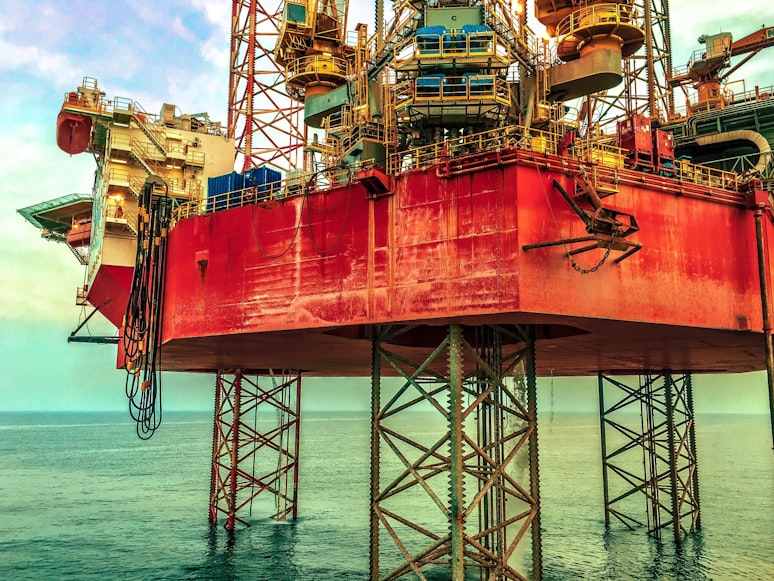Offshore drilling rigs are on the rise. As of 2021, the oceans house 201 offshore rigs—not much compared to land-based rigs (1,309). However, offshore drilling can be an extremely intricate process.
The world is 71% water. Strategizing the perfect extraction spot is just a step below spotting the Loch Ness monster, i.e., so difficult as to be impossible. Then there are the oceans themselves, which might be more of a mystery than outer space, but we know their depth very well. That doesn’t make the drilling process any easier.
Setting up a drilling platform on the ocean means sending your oilfield service equipment where the sun probably doesn’t shine, ensuring it stays undamaged during the extraction and bringing it to the refinery. It also means getting the most innovative energy solutions, if only to ensure your equipment and workers remain unscathed.
CNPS wants the oil and gas industry to understand what they’re in for with offshore drilling to meet the ever-rising energy demands of the modern world.
Building Rigs is Difficult (Not Building Them, Even More So)
If you’ve tapped into land oil drilling enough to come up empty and want to explore offshore oil drilling, you should know a few things. Let’s start with the rigs and platforms themselves, shall we?
Oil companies that have invested in offshore rigs and platforms have made an important contribution to the energy sector. In 2019 alone, they provided American homes with 2.3 million barrels of oil equivalent daily. While we’ve given offshore rigs quite the rep in our introduction, let’s not forget that it would be nearly impossible to extract crude oil from the ocean without their support.
Although they seem insignificant behind a camera lens, they’re massive structures more than capable of withstanding the elements. Without the stable platform these structures provide, your oilfield services and equipment might as well be a drop in the ocean.
More than One Type of Drilling Platform
Offshore drilling equipment goes as deep as 80–12,000 feet below the ocean’s surface. It’s possible that by the time you read this, there will be an innovative energy solution that can stay for a long period above the average threshold.
As it happens, there are many rigs and platforms.
Mobile Offshore Drilling Units (MODU)
MODUs facilitate the exploration and extraction of oil and gas-based hydrocarbons, salt, and Sulphur by sitting on a flatboat. The barge keeps these units from touching the ocean, sparing them from the damage caused by salty water.

Drillships
You may think of Drillships as a sea vessel with a hole in the hull for the drill. Like MODUs, Drillships are also used in floating drilling operations. However, they are rarely used today because of the motion characteristics of a ship-like drilling unit.
Semi-submersible Oil Rig
A semi-submersible oil rig contains a flat deck supported by semi-submerged columns, which, in turn, are supported by submerged pontoons. This oil rig remains a work in progress, but it has many early prototypes, which may or may not be in use today.
The Potential Returns of an Untapped Market
Every five years, the Bureau of Ocean Energy Management (BOEM) releases its National Assessment of the Undiscovered Technically Recoverable Resources (UTRR) on the Outer Continental Shelf.
BOEM’s 2021 report shows that the OCS holds approximately 68.79 billion oil barrels. Not only that, but it also holds 229.03 trillion cubic feet of undiscovered natural gas reserves.
There is a lot of positive in this report, albeit all in the future. While the global energy crisis could get worse, this report is a much-needed silver lining for the general public and American oil companies. It can create hundreds of thousands of jobs and bring down the skyrocketing fuel rates.
A Sustainable Energy Drilling Alternative
Offshore drilling platforms are associated with the repopulation of marine life. According to a 2020 study by the Bureau of Safety and Environmental Enforcement, semi-submersible oil rigs with four or more columns were home to thousands of fish in the ocean.
On the US OCS alone, there were approximately 558 reefed platforms. Those eight-legged structures can be a sanctuary for 12,000–14,000 marine lives.
Find Offshore Oil and Gas Equipment Solutions at CNPS
Visit the CNPS store online to browse oil and gas equipment and services for offshore drilling platforms. Upgrade to onshore and offshore wind power equipment, fiberglass pipe systems, oilfield mud logging products, EOR technology, or other land- and ocean-based oil and gas solutions to improve productivity. Ensure workplace safety and go eco-friendly with our renewable energy solutions.
Get in touch with our company reps for more information.


